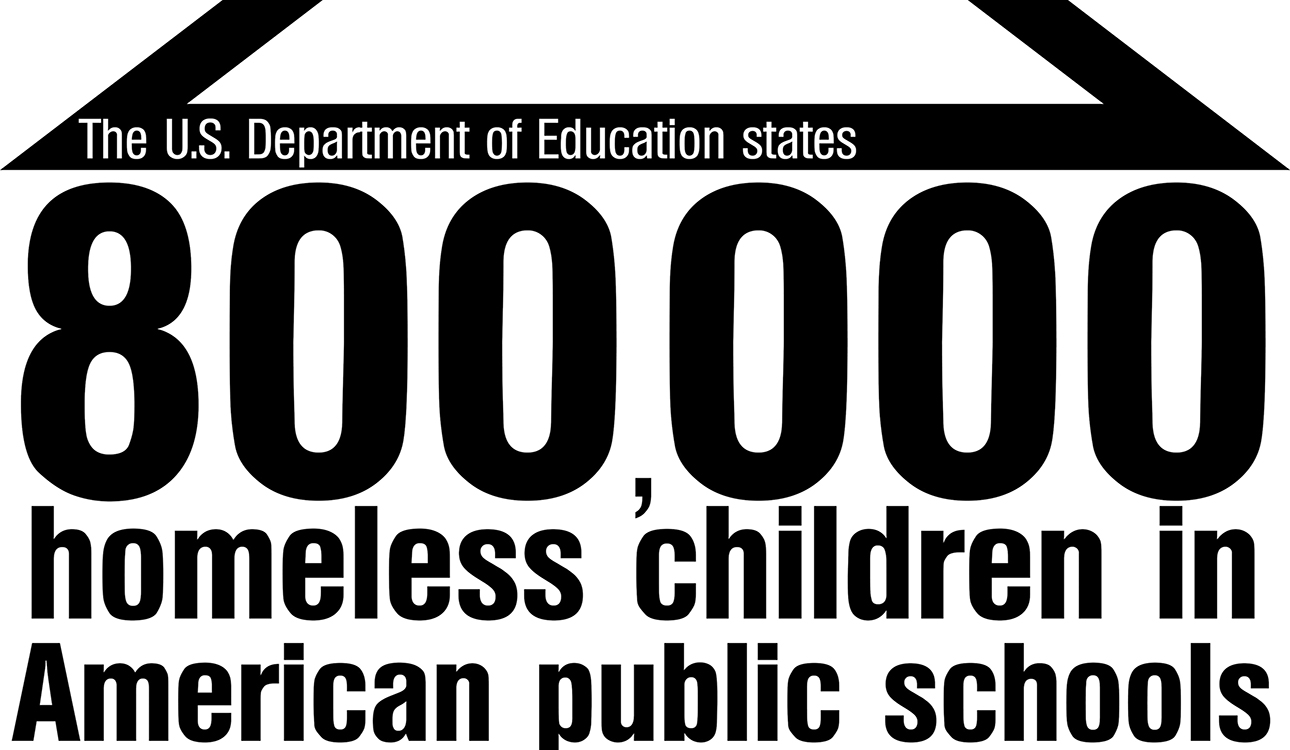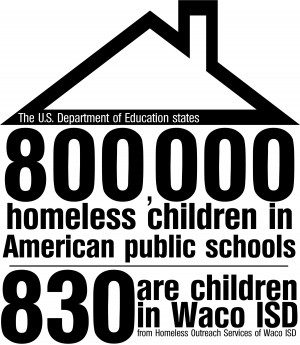By Jordan Corona
Staff Writer
Rhonda Milem didn’t know that families who don’t have a place to live sometimes stay in the Sandman Motel on Franklin Avenue until she took a job at the Dollar General just down the street.
“I see a lot of kids come here after school,” she said.
Children and their families, living in the area, frequent the store where Milem works.
“Sometimes they’ll borrow a basket to walk groceries to their hotel rooms,” she said.
Although it’s more difficult to spot than the stereotypical homelessness, children without a permanent place to sleep represent a subcategory of poverty and homelessness in the United States. Waco is no exception.
Cheryl Pooler, Waco Independent School District homelessness liaison, said it’s not unusual for families without a permanent residence to sleep in their cars or take shelter at places with low weekly rates or to stay with family and friends.
As of 2013 WISD enrollment, 830 children in the school were coded homeless by McKinney-Vento standards. The number reflects students who, in order to qualify for social services, let their case be coded “homeless” in the school system. Pooler said a lot of families aren’t forthcoming with that information for fear that Child Protective Services will intervene. Reaching out for help can be risky with such limited housing options as is the case in Waco.
Child homelessness is a complicated issue. While some can live with their families, others are by themselves. Either way, Pooler said she sees a problem.
“These kids are considered at risk,” Pooler said. “Within 48 hours of a student becoming homeless, they are 50 percent more likely to be victims of human trafficking.”
She said household economics and citizenship issues, illness, death and personal disputes leave minors displaced from their homes.
When the U.S. Department of Housing and Urban Development (HUD) published a report showing a four percent drop for homelessness since 2012, a quarter of that 610,042 population hadn’t even had an 18th birthday.
The U.S. Department of Education counted differently, however, and reported almost 800,000 homeless children enroll in public schools every year. For the 2011-2012 academic term, the department reported over 1.1 million children homeless in the public school system.*
The number discrepancy is due to two different definitions of homelessness, each preemptively defining part of the solutions dialogue.
“In HUD’s eyes, the count refers to folks who are literally homeless — folks living on the streets or sleeping in their car or it’s referring to folks who are in a shelter or living in transitional housing,” said Katie Fager, Homeless Information System program analyst at the city’s Housing and Development Department.
While the housing department recognizes specific characteristics of homelessness in their definition, public schools keep count from a definition set in place by the McKinney-Vento act that’s more applicable to minors in the school system.
McKinney-Vento standards tend to cover a more broad set of circumstances a student with out a home could incur.
The definitions represent two aspects of a dialogue about homelessness. Short-term and long-term solutions have a place when it comes to addressing homelessness.
Teri Holtkamp, Waco homelessness administrator said, “Shelter should be very temporary,” she said. “You have to be really careful with the youth and we’re trying to figure out what’s the best way to deal with that? Shelter or rehousing?”
For Waco minors with out a permanent place to sleep at night, there is a shortage of both.
Jennifer Caballero, lead data analyst at the city’s Housing and Development Department, said much of homelessness issue for minors has to do with Waco’s lack of affordable housing.
“There just isn’t enough permanent housing in Waco,” she said.
Currently, the closest short-term shelter available to minors who need a place to stay is in Killeen and operated by the Central Texas Youth Services and Bell, Coryell and McLennan counties.
*Editor’s note: This sentence was added to reflect more current depiction of homelessness in the school system.







